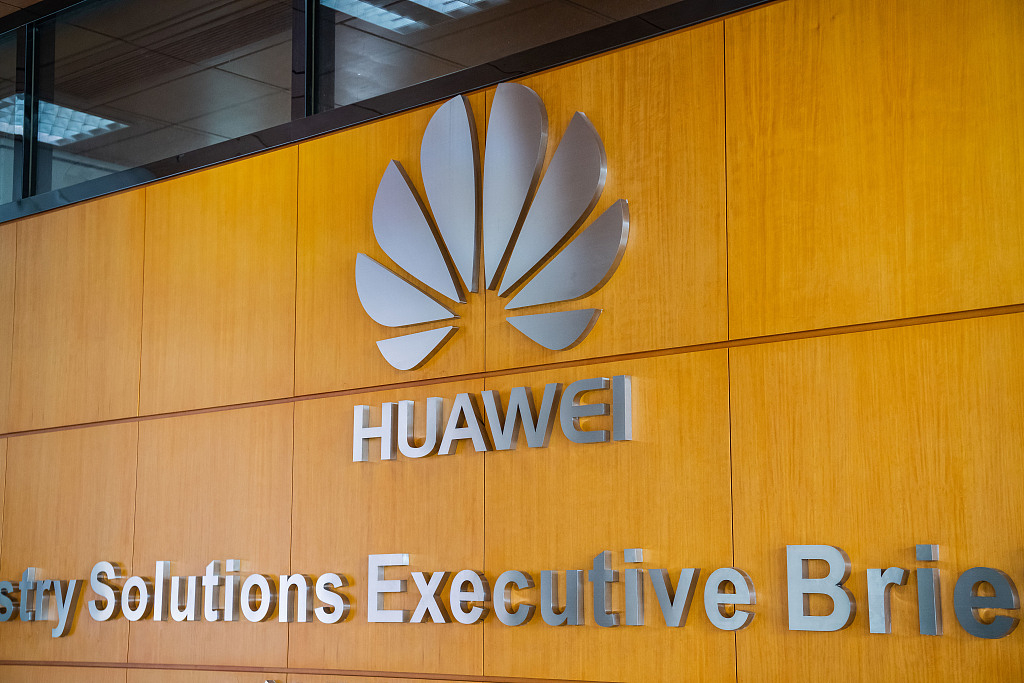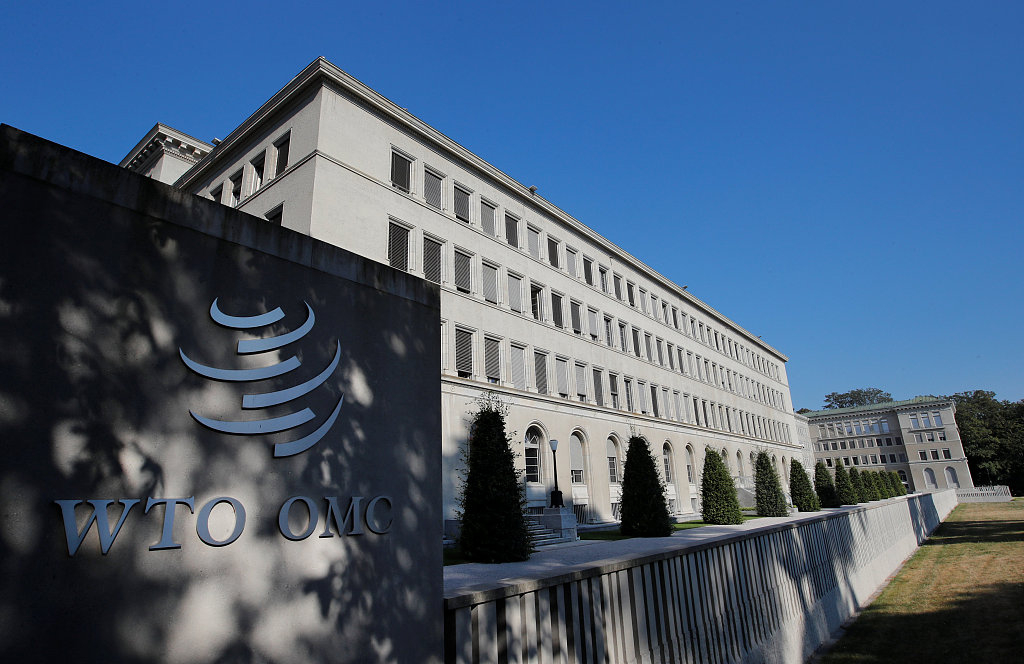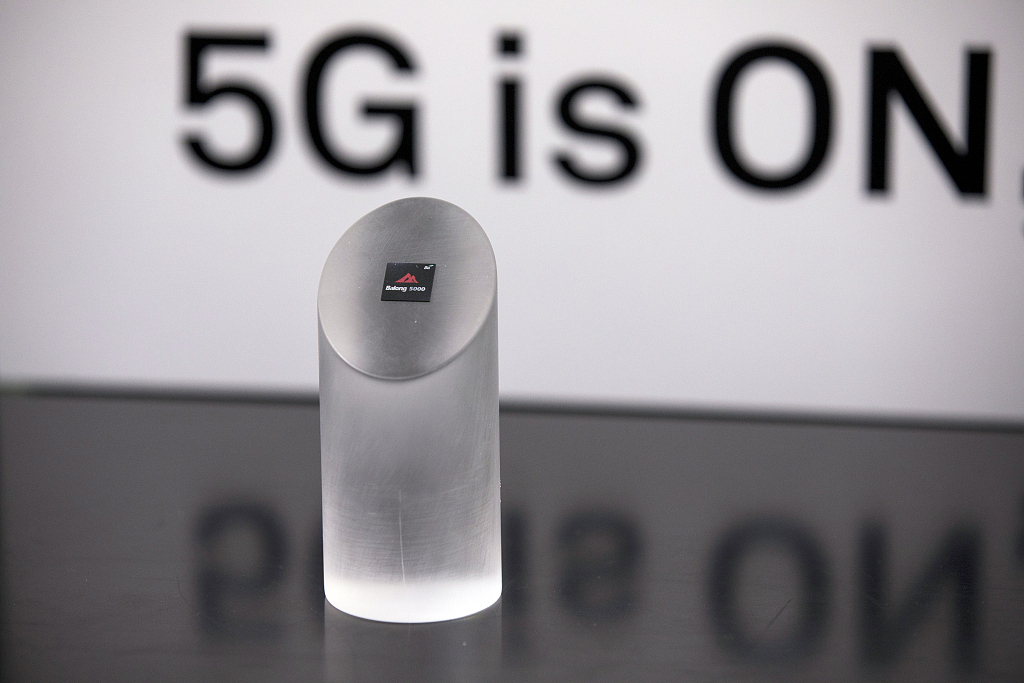
Opinion
11:45, 29-Apr-2019
Why Australia’s Huawei ban is unjustifiable under the WTO
Zhou Weihuan & Kong Qingjiang

Editor's note: Zhou Weihuan is a senior lecturer and member of the Herbert Smith Freehills China International Business and Economic Law (CIBEL) Centre of the Faculty of Law at the University of New South Wales (UNSW Sydney) in Australia, and Kong Qingjiang is the dean of the School of International Law at China University of Political Science and Law. The article reflects the authors' opinion, and not necessarily the views of CGTN.
Despite the United States call for a boycott of Huawei, its intelligence allies (known as the Five Eyes alliance) have responded differently to the company's request for involvement in their 5G networks. Australia, however, based on a recent security review of its telecommunication sector, decided to exclude Huawei.
China complained about the Australian decision at the formal meeting of the WTO's Council for Trade in Goods on April 11, 2019. China's concern is not necessarily about Australia's ban on 5G equipment based on security and other grounds per se. It is about the discriminative effect that the ban aims to have on China.
A recent opinion piece, in the East Asia Forum, offered an excellent overview of the Australian measure and the legal issues it creates for the World Trade Organization (WTO). It, in a way, resonates China's view and conveys the right message why the Australian ban is unlikely to be justified under the WTO.
Australia imposes obligations on all local telecommunication operators “to protect Australian networks from unauthorized interference or access that might prejudice … [Australia's] national security.”
Such security risks, according to the measure, would arise from “the involvement of vendors who are likely to be subject to extrajudicial directions from a foreign government that conflict with Australian law.” The measure, therefore, is ‘origin-neutral' on its face as it does not explicitly name China as the source of the risks to Australia's cybersecurity.

The Huawei Technologies Co. logo is displayed at the Huawei Technologies Co. headquarters in Shenzhen, China, March 29, 2019. /VCG Photo
The Huawei Technologies Co. logo is displayed at the Huawei Technologies Co. headquarters in Shenzhen, China, March 29, 2019. /VCG Photo
The first question for the WTO is whether the Australian measure discriminates against Chinese 5G equipment in favor of the same or similar equipment from other WTO members. Due to Australia's ambition to roll out its 5G network this year without using Chinese-sourced equipment, its telecommunication operators have started to partner with other foreign firms which have the capacity to supply the required equipment.
To establish a breach of the non-discrimination rule, China would need to show that the market access Australia has given to 5G equipment originating in other WTO members has not been granted to Chinese 5G equipment suppliers such as Huawei.
This breach may be established if the Australian measure has the effect of discriminating against Chinese 5G equipment, even though it does not exclude China explicitly. In addition, this breach does not require a complete ban on Chinese 5G equipment.
Rather, conditional market access may also violate the non-discrimination rule if the conditions applied to Chinese 5G equipment are more onerous than those applicable to 5G equipment from other foreign sources.
To defend its measure, Australia may resort to WTO-permitted security exceptions.
However, as the East Asia Forum opinion has expounded, using the security exceptions to justify the Australian measure would be a "stretch" contrary to the narrow scope of the exceptions and the recent decision of the WTO court in the Russia-Traffic in Transit case. This argument could hardly withstand the scrutiny of the WTO court for two major reasons.

The World Trade Organization (WTO) headquarters in Geneva, Switzerland, July 26, 2018. /VCG Photo
The World Trade Organization (WTO) headquarters in Geneva, Switzerland, July 26, 2018. /VCG Photo
The most important reason is that the Australian ban would constitute unjustifiable discrimination under the heading general exceptions. There is no evidence to show that Chinese 5G equipment poses a higher risk to Australia's policy objectives than 5G equipment produced by other foreign suppliers.
Therefore, the unjustifiability of the ban lies in the fact that discrimination does not have a rational connection with Australia's chosen objectives. Simply put, if 5G equipment from all sources would generate the same degree of risks to Australia's interests, why only is Chinese equipment prohibited?
Australia could explain that the discrimination comes out of its concerns about the influence of the Chinese Government on Huawei which may be coerced into undertaking intelligence activities. However, this concern is, at best, an unfounded suspicion.
Moreover, many other governments have shown incentives and capability to engage in cyber espionage and could do so via their private entities. If China poses a potential threat to Australia's regulatory interests, that threat would also come from the other countries.
The other reason has to do with the "necessity" test under the general exceptions that requires Australia to use a vehicle that is less-trade-restrictive than the ban if the alternative is equally effective in achieving the chosen objectives and reasonably available.

The Huawei Technologies Co. 'Balong 5000' chip for 5G devices is unveiled during an event in Beijing, January 24, 2019. /VCG Photo
The Huawei Technologies Co. 'Balong 5000' chip for 5G devices is unveiled during an event in Beijing, January 24, 2019. /VCG Photo
While the WTO court would not question the regulatory goals that Australia chooses to pursue, the fact that the ban is discriminatory means that it could not provide full protection of Australia's interests (assuming 5G equipment may indeed cause harm to these interests).
Given this reduced level of protection, many less trade-restrictive mechanisms that do not discriminate against China may well become equally effective and reasonably available.
One example is the UK's approach whereby Huawei is given access to some ‘non-core' parts of Britain's 5G data network. The UK's approach is reportedly based on the security risks associated with 5G equipment, not based on the nationality of the equipment.
Similarly, the European Union has also suggested that its regulatory response to 5G security risks would be applied to all companies not only Huawei.
If a country genuinely seeks to protect its 5G network security or other related interests, it would need to concentrate on developing a comprehensive and effective risk assessment and management mechanism. Discriminating China is hardly the solution, just as it is hardly justifiable under the WTO.
(If you want to contribute and have specific expertise, please contact us at opinions@cgtn.com.)

SITEMAP
Copyright © 2018 CGTN. Beijing ICP prepared NO.16065310-3
Copyright © 2018 CGTN. Beijing ICP prepared NO.16065310-3